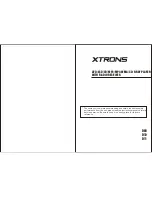
IC
L
ive
Users Manual
14
Network Connectivity
Some common symptoms of network connectivity problems include:
- Red Network Error indicator in a Device’s Zone view
- Cannot use a Device (add to Devices or Zones) that appears in Network Discovery
- Errors when writing beams
Solutions to the above problems may include the following cable work:
- Check for split pairs. A split pair cable will drop packets even if the cable is only 2 meters long. The wiring example
diagrams
shown below represent an incorrect split pair and correct wiring.
- Re-make the RJ45 connector. A marginal or corroded crimp will cause dropped packets.
- Check the cable length. The Ethernet standard for unshielded twisted pair copper cables is a maximum 100 meters
(330 feet).
Suspected Transducer Failure
Defective transducers are hard to locate in steerable column arrays because the transducers are so close together. If one
is bad, it’s hard to tell which one it is. The digital steering reduces the drive to some of the transducers making it difficult
to determine if a certain transducer has failed or is just being driven at a much lower level than other transducers. No
movement of the cone of a transducer is not positive proof that the transducer is bad. It could be that beam steering is
limiting the drive to the transducer or restricting its use to a narrow frequency band.
In Iconyx arrays, Preset 00 is set to send an equal signal to all transducers. To check for a defective transducer, select
Preset 00, remove the grille from the module(s) and use your fingertips to feel for cone vibrations while music is being
played through the system.
Note that it is also possible, and likely more convenient, to perform the open coil test available in RHAON II. The test
must be enabled in RHAON II Preferences then will appear in the Active Zone view for each array. Always recall Preset
0 before performing this test. The test will cause the loudspeaker to emit a loud tone for several seconds. Refer to the
RHAON II User Manual for more information.
CORRECT WIRING
Pins 1 & 2 = 1 pair
Pins 3 & 6 = 1 pair
Pins 4 & 5 = 1 pair
Pins 7 & 8 = 1 pair
INCORRECT WIRING (Split Pair)
Pins 1 & 2 = 1 pair
Pins 3 & 4 = 1 pair
Pins 5 & 6 = 1 pair
Pins 7 & 8 = 1 pair


































